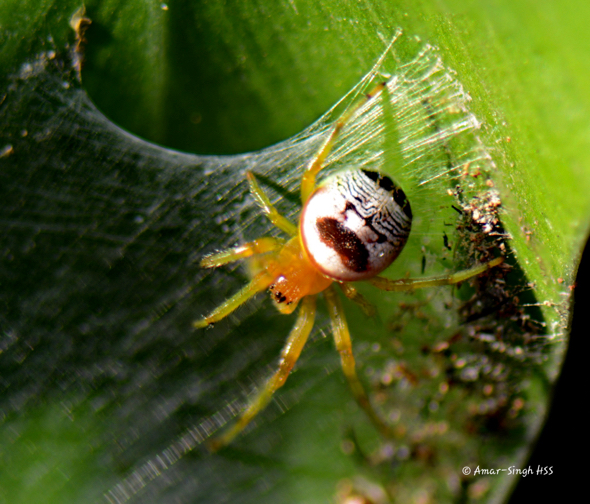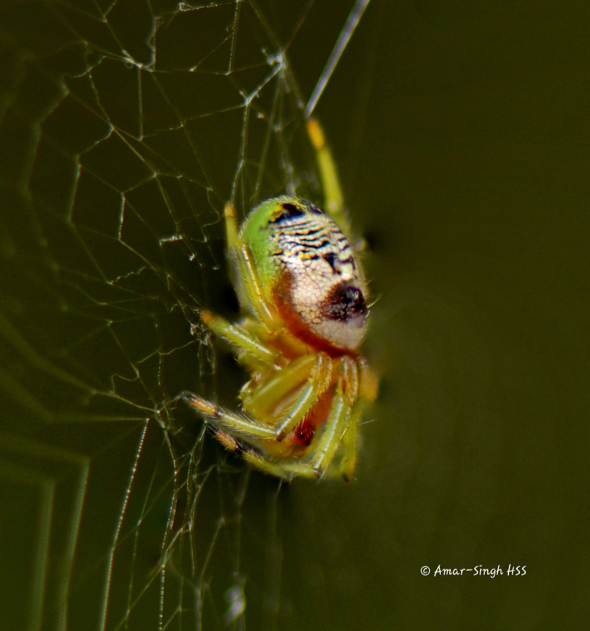“Araneus mitificus (Pale Orb Weaver) is a garden spider of South-East Asia and often called the Kidney Garden Spider. They are small spiders, females measuring about 6-9 mm in size, but what is striking are the markings on the dorsal surface of the globular abdomen. There is a large black-brown kidney shaped marking for which it is named (above).
“However for me, and others – see HERE, the first look at the many markings suggests the face of a human. The ventral surface is green. Males are smaller and less well marked.
“Apart from the interesting appearance, this spider has a fascinating method of capturing prey while keeping itself safe. Like some other spiders, it builds a web to catch prey. However rather than sit in the open to wait, it builds a small silk ‘hide away’ adjacent and connected to the web.
“In our home the terminal end of a Bird’s-nest fern (Epiphytic ferns in the genus Asplenium) was used (above, below). The spider web is well constructed on three sides except the side attached to the ‘hide away’.
“Here only three strands of web are linked to where the spider waits (below). One of these strands leads directly to where spider is resting. It serves to inform the spider when prey has been caught; akin to our feeling a kite on a string or a fish on a fishing line.
“This method of feeding also offers safety to the spider from its own predators. A wonderful way to keep safe while waiting for your food to arrive.
“Disclosure: The spider and web was not harmed in any way. A gentle mist spray of water was used to highlight the spider web to enable photographic documentation.
“NB: One extra plate (above) offered to show spider from side view on the web.”
Dato’ Dr Amar-Singh HSS
Ipoh, Perak, Malaysia
31st January 2016
References/Useful Information:
1. Araneus mitificus by Wikipedia HERE.
2. Carly Brooke. Meet the Spider That Looks Just Like the Pringles Man HERE.














2 Responses
What brilliant observations and documentation. Wonderful!
Thanks Howard. Just learning to do macro photography so as to document insect behaviour. Just as fascinating as birds.